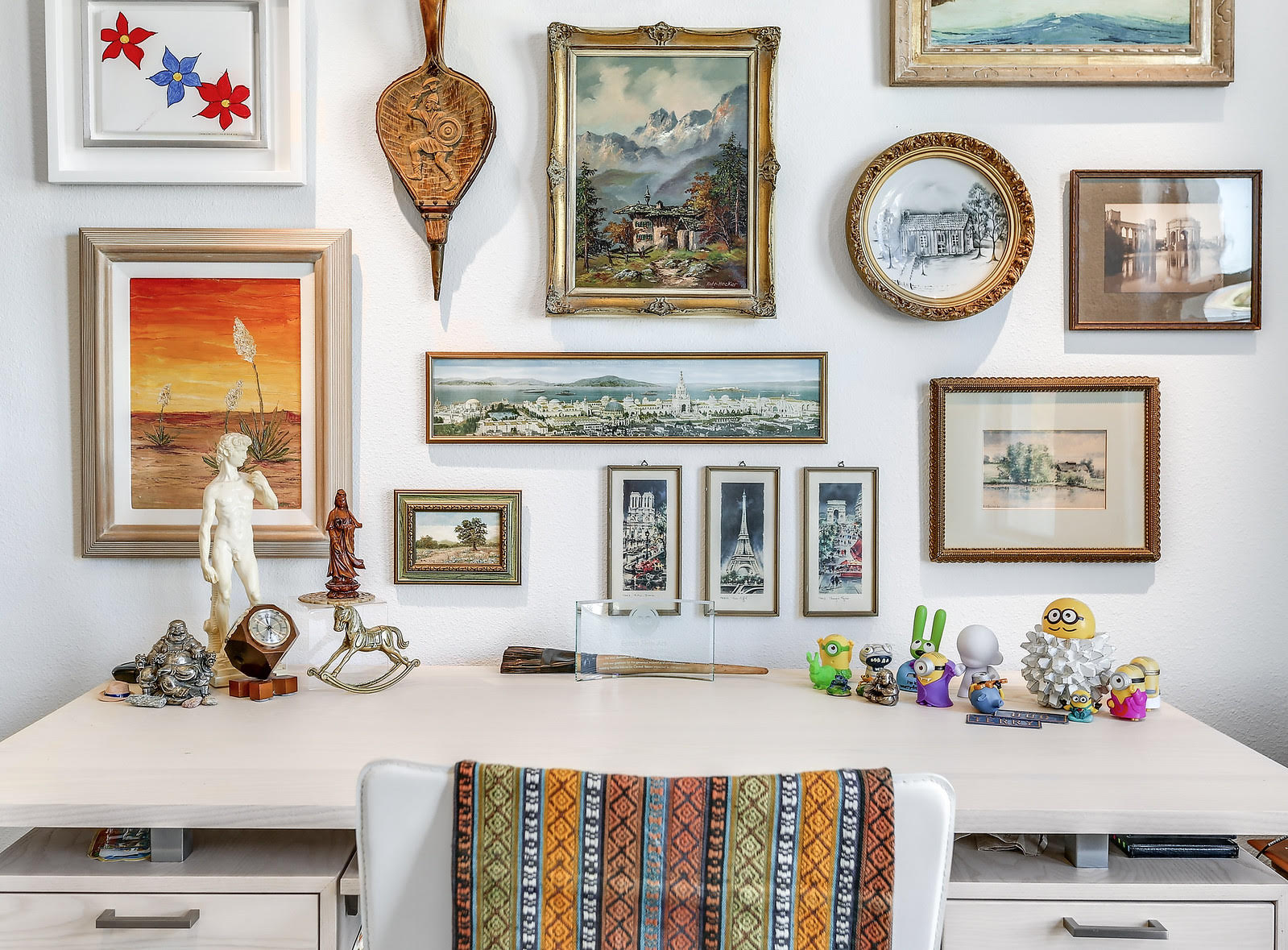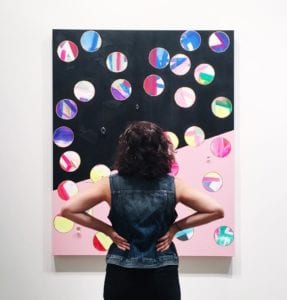You might have heard that The Metropolitan Museum of Art celebrated the one-millionth visitor to Heavenly Bodies: Fashion and the Catholic Imagination on August 23rd making the exhibition the most attended ever sponsored by The Costume Institute and the show continues for another month.
Your first thought on hearing about the Heavenly Bodies exhibition might have been: The Met’s having a Catholic fashion show? Really? If the first image that popped into your mind was Black Watch Catholic school uniforms or one of Madonna’s 80’s outfits you are not alone. The controversy stirred by Rihanna’s Met Gala outfit aside, this is a thoughtful exhibition that the Met and the Vatican planned for over a year. It is the largest exhibition The Costume Institute has ever presented. Attendance has surpassed two of the Met’s other blockbuster fashion exhibits, China: Through the Looking Glass and Alexander McQueen: Savage Beauty. The exhibition begins in the medieval sculpture hall at the Met Fifth Ave. It is so large that it expands uptown to the Met Cloisters in northern Manhattan. Andrew Bolton, director of The Costume Institute, and the exhibition staff did an outstanding job designing the exhibition.
An exhibition focusing on Catholicism and fashion was bound to provoke some controversy about cultural appropriation and the sexualization of religious attire, and it has. However, Andrew Bolton Head Curator of The Costume Institute states on the Met’s blog that the show intends to analyze “the role dress plays within the Roman Catholic Church and the role the Roman Catholic Church plays within the fashionable imagination.” The majority of the designers featured in Heavenly Bodies, Bolton says, “were raised in the Roman Catholic tradition. While many of them no longer practice Catholicism and their relationships to it vary considerably, most acknowledge its significant influence over their imaginations.”
Eleanor Heartney explored this theme in her important book Postmodern Heretics: Catholic Imagination in Contemporary Art in which she explored contemporary artists who are strongly influenced by their upbringing in the Catholic Church, artists such as Andres Serrano, Robert Mapplethorpe, and Kiki Smith. Both Bolton and Heartney quote Andrew Greeley’s book The Catholic Imagination, “The Catholic imagination in all its many manifestations . . . tends to emphasize the metaphorical nature of creation.” Bolton continues “Greeley’s observations about the nature of Roman Catholicism reverberate throughout the exhibition’s themes, which will explore how the Catholic imagination has shaped the creativity of designers and how it is conveyed through their fashions. Forged and fueled by stories and images, the Catholic imagination operates on a narrative level, which is where its power lies and its resonance is felt.”
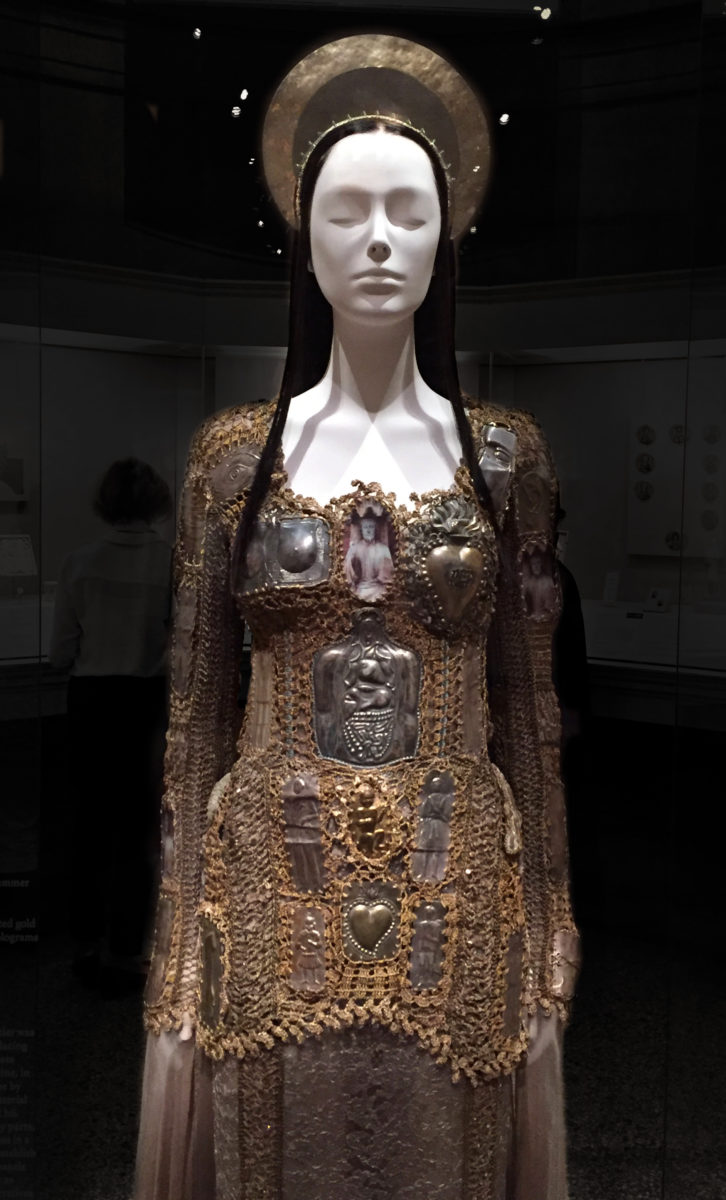
The overarching scope of the exhibit ranges from papal vestments, gold and jewel encrusted pectoral crosses and miters from the Vatican to top name contemporary designers. Some of the most outstanding pieces in the show are by French designer Jean Paul Gaultier whose work epitomized the Catholic imagination theme of the show with works like Ex-Voto and Guadalupe both from his Spring/Summer collection 2007. Ex-Voto is an assemblage of religious ex-votos (metal repousse devotional amulets) stitched together to form an evening dress. Guadalupe is a blue silk jersey dress with a beaded bleeding heart pierced by a sword an image culled from Marian devotion of the Immaculate Heart. Other favorites at the Met Fifth Ave are Alexander McQueen’s birch plywood and leather winged ensemble and Christian Lacroix’s Wedding Ensemble, 2009–10.

The show is too big to be contained at the 5th Ave building and continues to the Met Cloisters. The Cloisters is an assemblage of several medieval monasteries from Europe reassembled on the banks of the Hudson. It is the ideal setting for an exhibition on religious inspired fashion. The most recognizable piece of art in the Met’s collection at the Cloisters is the medieval tapestry, The Unicorn in Captivity, from the 15th century. It is nicely complemented in this exhibition by Thom Browne’s Wedding Ensemble, 2018, which has a unicorn embroidered on it.
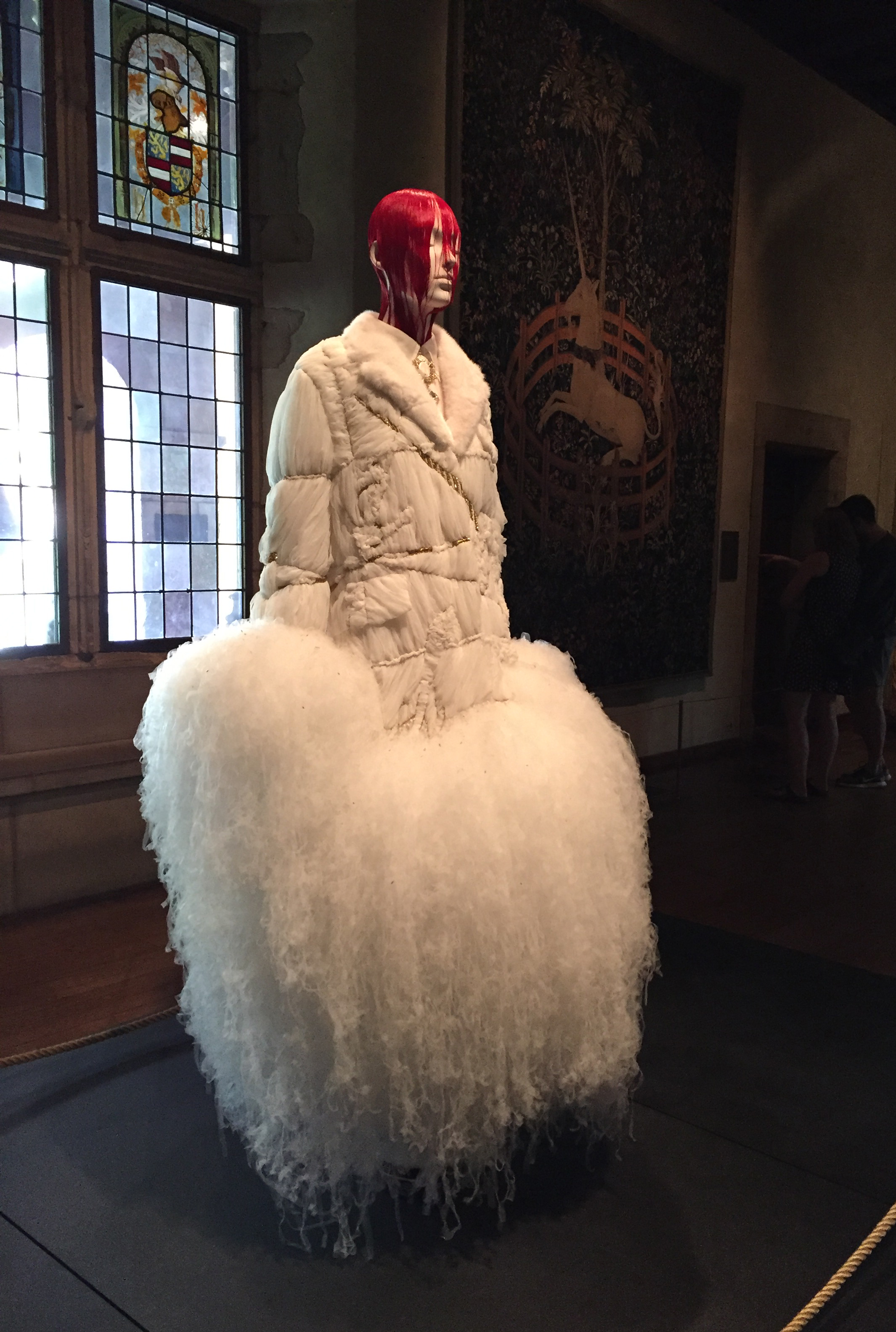
Another wedding ensemble by Cristobal Balenciaga (House of Balenciaga spring 1967) is placed compellingly in a chapel where Ava Maria is playing. Other highlights include four black ensembles placed on high pedestals in an interior courtyard. The most striking of these being a cloak embellished with arch designs that echo the courtyard’s arches designed for Valentino (Maria Grazia Chiuri and Pierpaolo Piccioli) 2015- 16 and a mysterious and beautifully situated red ensemble for House of Dior (John Galliano), 2006.
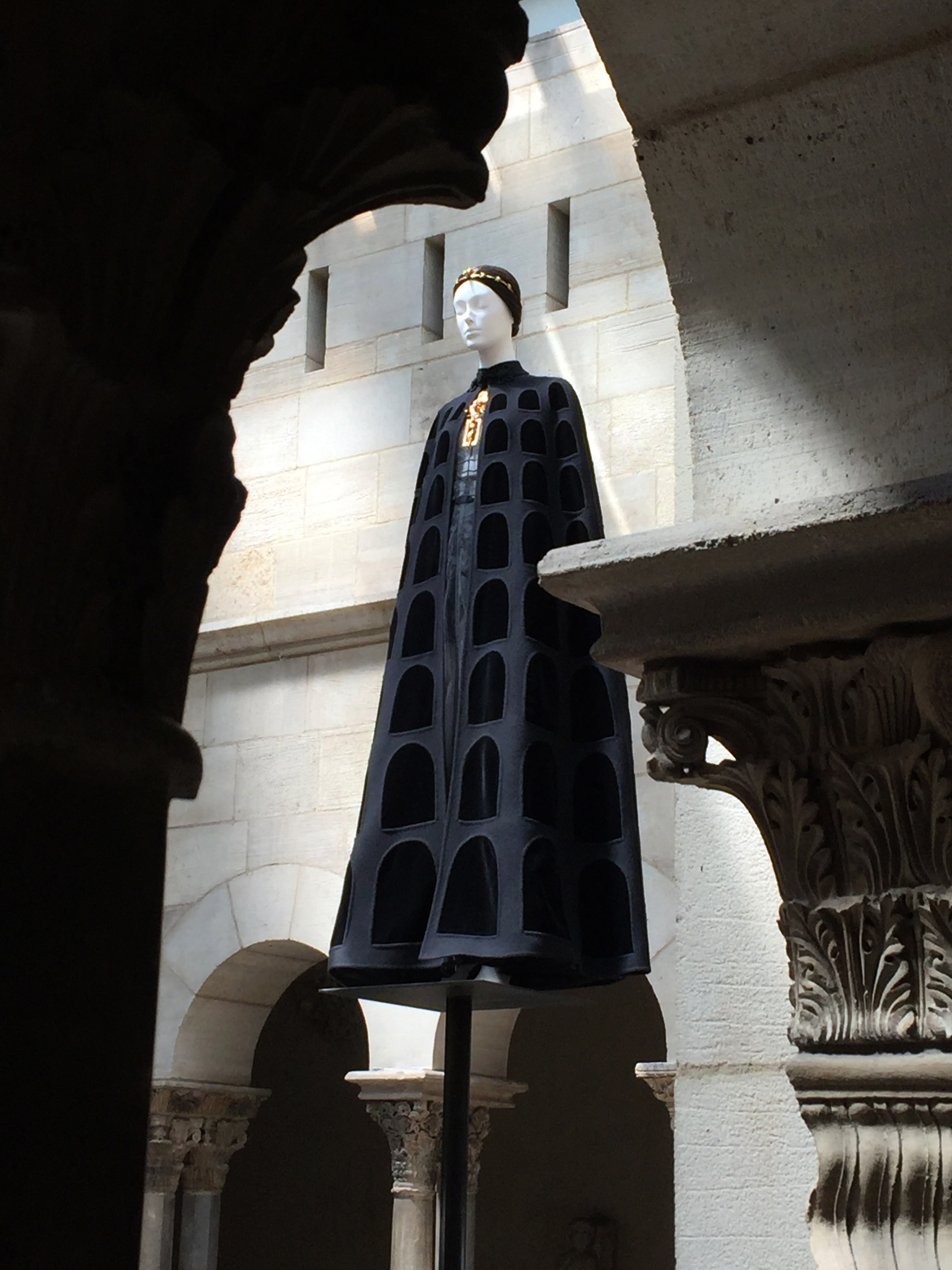
Bolton concludes, “While the fashions that comprise this journey might seem fanciful, they should not be dismissed lightly, for they not only embody the imaginative tradition of Catholicism but also exemplify its propensities for storytelling. As expressions of the Catholic imagination, they sing with distinctly enchanted and enchanting voices.”
The exhibition closes on October 8th, so we highly suggest you experience it while you can.
top image // House of Dior – John Galliano, courtesy of author


